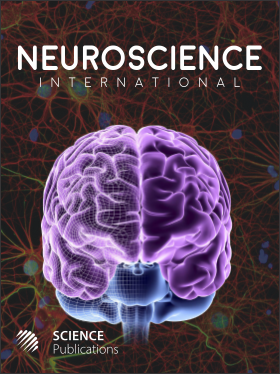CALCITONIN GENE-RELATED PEPTIDE IN SERUM AFTER SPONTANEOUS SUBARACHNOID HEMORRHAGE
- 1 University Medical Center Regensburg, Germany
Abstract
Endogenous Calcitonin Gene-Related Peptide (CGRP) stored in perivascular nerve fibers around the cerebral arteries mediates vasodilation and regulates cerebral blood flow under physiological conditions. Increased levels of CGRP have been continually reported in patients with migraine, but the role of CGRP in the pathophysiology of Subarachnoid Hemorrhage (SAH) has not yet been sufficiently evaluated. Over 10 days, serum was prospectively collected from 33 consecutive patients (17 women, 16 men; mean age 52.8 years) with spontaneous non-traumatic SAH. All patients were graded III or IV according to the Fisher Score. CGRP levels were determined by means of an Enzyme-Immunosorbent Assay (EIA). CGRP concentrations were correlated to (1) the anatomical localization of the aneurysm (anterior circulation or posterior circulation), (2) the treatment modality (clipped group, coiled group, or untreated group) and (3) the rate of ischemia determined by computed tomography (ischemia group, non-ischemia group, or iatrogenic ischemia group). (1) Anatomical localization: CGRP levels were significantly higher in patients with a ruptured aneurysm of the anterior circulation (p<0.001). (2) Treatment modality: CGRP levels differed significantly between the groups (coil group, clip group, or untreated group; p<0.001). The highest levels of CGRP were detected in the coil group and the lowest levels in the untreated group. About (3) Ischemia: CGRP levels differed significantly between the three groups (ischemia group, non-ischemia group, or iatrogenic ischemia group; p = 0.038). The highest levels of CGRP were found in the ischemia group. The maximum levels of CGRP in serum were found for patients with a ruptured aneurysm of the anterior circulation and subsequent ischemia treated by endovascular coiling. These findings support the theory that CGRP is produced and excessively released to counteract cerebral vasospasm and subsequent ischemia. Presumably, the serum levels of CGRP are affected by the anatomical localization of the aneurysm and can be stimulated by any endoluminal manipulation of the parent artery.
DOI: https://doi.org/10.3844/amjnsp.2014.10.17

- 4,425 Views
- 2,533 Downloads
- 2 Citations
Download
Keywords
- Neuropeptides
- Calcitonin Gene-Related Peptide
- Cgrp
- Subarachnoid Hemorrhage
- Biomarker
- Outcome
- Cerebral Ischemia
- Vasospasm
